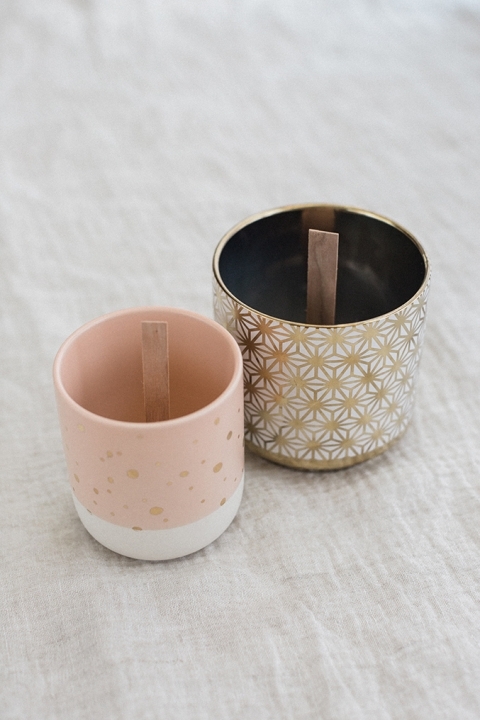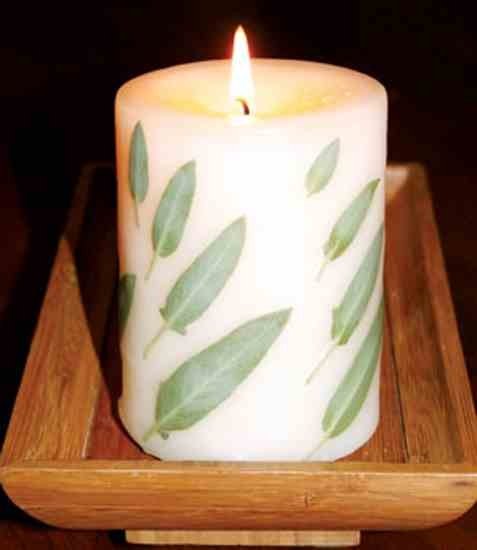Sheet beeswax making candles involves using high-quality beeswax sheets to create beautiful and natural candles. This process allows candle makers to enjoy the benefits of beeswax, such as its clean burn and sweet honey scent. In this article, we will explore the intricacies of sheet beeswax candle making, from the history of beeswax candles to tips on selecting the right materials.
Beeswax has a long-standing history in candle making, dating back centuries. It was highly prized for its clean-burning properties and pleasant aroma. Today, beeswax continues to be a popular choice for candle enthusiasts who appreciate its organic nature and sustainable production. Understanding the origins and significance of beeswax in candle making can provide valuable insights into why it remains a preferred material for many.
When it comes to choosing the right beeswax sheets for candle making, quality is key. Selecting sheets that are free from impurities and chemicals will ensure your candles burn cleanly and efficiently. With the right materials in hand, you can embark on the journey of creating your own unique beeswax candles. Stay tuned as we delve deeper into the process of making candles using sheet beeswax and uncover the benefits that come with it.
History of Beeswax Candles
Beeswax candles have a long and rich history, dating back to ancient times. The use of beeswax as a material for making candles can be traced back to the Egyptians, who dipped papyrus reeds into melted beeswax to create early versions of candles. Beeswax candles were also popular in ancient Rome, where they were used in religious ceremonies and events due to their pleasant aroma and clean burn.
During the Middle Ages, beeswax candles became symbolic in Christian churches as a representation of purity and light. The Church used beeswax candles exclusively for religious ceremonies and special occasions, emphasizing the importance and sacredness of these candles. Beeswax was considered a luxury material due to its scarcity and labor-intensive production process, making it highly valued among royalty and nobility.
In modern times, beeswax continues to hold significance in candle making for its natural properties and benefits. Beeswax is known for its clean burn, long-lasting flame, and subtle honey-like scent when melted.
Unlike paraffin wax or soy wax, beeswax does not produce harmful toxins when burned, making it a healthier option for indoor air quality. Its historical relevance combined with its unique qualities has cemented beeswax as a preferred choice for candle enthusiasts looking for high-quality and eco-friendly materials.
Benefits of Beeswax Candles
Longer Burn Time
Beeswax candles are known for their longer burn time compared to other types of candles. This is due to the high melting point of beeswax, which allows the candle to burn slower and more evenly. As a result, beeswax candles can last up to three times longer than paraffin or soy candles. This prolonged burn time not only means you get more out of each candle but also contributes to cost savings in the long run.
Cleaner Burning
One of the key advantages of using beeswax candles is their clean-burning properties. Beeswax emits very little soot when it burns, unlike paraffin candles which can release toxins and potentially harmful chemicals into the air. This makes beeswax candles a healthier choice for indoor environments, especially for individuals with sensitivities or allergies. The clean burn of beeswax also helps maintain the quality of your walls, ceilings, and furniture by minimizing soot buildup.
Natural Air Purifier
Beeswax candles have natural air-purifying qualities that set them apart from other types of candles. When beeswax burns, it releases negative ions into the air which bind with positively charged particles like dust, pollen, mold spores, and odors.
This process effectively cleanses the air in your home, creating a fresher and healthier environment. By choosing beeswax candles for your space, you not only enjoy their warm glow and subtle honey scent but also benefit from their purifying effects on indoor air quality.
Choosing the Right Beeswax Sheets
When it comes to making candles using beeswax sheets, selecting the right quality beeswax is essential for achieving the best results. High-quality beeswax sheets not only ensure a cleaner and longer burn of your candles but also contribute to their overall appearance. One of the key factors to consider when choosing beeswax sheets is their purity. Look for sheets that are made from 100% pure beeswax without any added fillers or chemicals.
Another important aspect to keep in mind is the color and texture of the beeswax sheets. Beeswax naturally comes in various shades ranging from pale yellow to deep amber, depending on the pollen and propolis content.
The color of the beeswax can affect the final look of your candles, so choose a shade that complements your desired candle aesthetic. Additionally, pay attention to the texture of the beeswax sheets – they should be pliable and easy to work with when making candles.
It’s also recommended to purchase beeswax sheets from reputable suppliers who source their materials ethically and sustainably. This ensures that you are supporting responsible beekeeping practices while also getting high-quality beeswax for your candle making projects. By carefully selecting the best quality beeswax sheets for your candles, you can enjoy a more enjoyable crafting process and beautiful finished products that will enhance any setting.
| Aspect | Consideration |
|---|---|
| Purity | Look for 100% pure beeswax without fillers or chemicals |
| Color & Texture | Choose a shade that complements your candle aesthetic with pliable texture |
| Source | Purchase from ethical and sustainable suppliers for high-quality materials |
Step-by-Step Guide to Making Beeswax Candles
Making candles using beeswax sheets is a fun and creative process that results in beautiful, all-natural candles. To start this project, you will need a few essential materials including beeswax sheets, wicks, scissors, ruler, hairdryer or heat gun, and any desired decorations for the candles such as dried flowers or herbs.
Cutting the Beeswax Sheets
The first step in making beeswax candles is to cut the beeswax sheets to the desired size. Use a ruler and scissors to cut the sheets into strips that are slightly wider than your chosen candle width. Make sure the strips are long enough to roll up into a candle without cracking or breaking.
Attaching the Wick
Next, take a wick and place it along one edge of the beeswax sheet. Gently press the wick into the wax to ensure it sticks securely. You can use a small amount of melted beeswax at the edge of the sheet to help secure the wick in place before rolling up the candle.
Rolling Up the Candle
Once the wick is firmly attached, carefully roll up the beeswax sheet tightly around the wick. Use gentle pressure as you roll to ensure that the candle stays together without gaps or air pockets. If needed, you can use a hairdryer or heat gun to warm up the wax slightly, making it easier to roll. Trim any excess wax at the end of rolling and press down gently to seal.
By following these simple steps, you can create your own unique beeswax candles using quality beeswax sheets. Experiment with different colors and sizes of sheets for varied candle designs and have fun customizing your creations with decorative elements like dried flowers or herbs for a personal touch. Enjoy the process of creating homemade candles with natural materials that not only look beautiful but also provide a clean and fragrant burn when lit.
Creative Candle Design Ideas
Beeswax candles offer a wide range of creative possibilities when it comes to design and techniques. One popular method for creating unique candles is by using different colored beeswax sheets. These sheets come in an array of colors, allowing crafters to mix and match to create vibrant and eye-catching candles. Whether you’re looking to make rainbow swirls, ombre effects, or intricate patterns, beeswax sheets provide an excellent medium for creativity.
In addition to colors, beeswax sheets can also be shaped and molded into various forms. From simple rolled pillar candles to elaborate sculptural creations, the flexibility of beeswax sheets allows for endless design options. For those interested in adding texture to their candles, embossing tools can be used on the sheets before rolling or shaping them. This technique adds a unique touch to the finished product and can elevate the overall look of the candle.
Another popular trend in beeswax candle design is incorporating natural elements into the wax. Dried flowers, herbs, or even small pinecones can be embedded into the beeswax sheets before rolling them into candles. This not only adds aesthetic appeal but also infuses the candles with lovely natural scents when burned. The organic look of these candles is both charming and eco-friendly, appealing to those who prefer sustainable and nature-inspired décor.
| Benefits | Details |
|---|---|
| Creative Possibilities | Wide range of designs and techniques achievable |
| Colorful Options | Different colored beeswax sheets allow for mix-and-match options |
| Natural Elements | Dried flowers, herbs, or pinecones can be embedded for added aesthetic appeal |
Scenting Beeswax Candles
Beeswax candles are known for their natural, subtle honey scent that fills a room when lit. However, if you are looking to enhance the fragrance of your beeswax candles, there are several ways to add scents to them. Here are some creative ideas to explore:
- Essential Oils: One popular method is to use essential oils to add fragrance to beeswax candles. Simply mix a few drops of your favorite essential oil into the melted beeswax before pouring it into the mold. Popular choices include lavender, citrus, and eucalyptus.
- Dried Herbs and Flowers: Another way to scent beeswax candles naturally is by adding dried herbs or flowers. You can place these botanicals in the bottom of the mold before pouring the melted beeswax over them. As the candle burns, the herbs and flowers will release their delightful fragrances.
- Fragrance Oils: If you prefer a more intense scent, you can opt for fragrance oils specially formulated for candle making. These oils come in a wide variety of scents and strengths, allowing you to customize the aroma of your beeswax candles according to your preference.
Adding fragrance to your beeswax candles can create a unique sensory experience and elevate the ambiance of any space. Whether you choose essential oils, dried herbs and flowers, or fragrance oils, experimenting with different scents will allow you to create one-of-a-kind candles that not only look beautiful but also smell amazing.
Remember that when adding fragrance to your beeswax candles, it is important to consider compatibility with the wax and wick for optimal burning performance. By following proper guidelines and experimenting with different scents, you can personalize your candle-making process and enjoy delightful aromas throughout your home.
Tips for Storing and Burning Beeswax Candles
Caring for your beeswax candles properly is essential to ensure their longevity and safe use. Beeswax candles are unique in that they burn longer, cleaner, and brighter than other types of candles, but they still require some maintenance to get the most out of them. Here are some tips for storing and burning beeswax candles.
When storing your beeswax candles, it’s important to keep them away from direct sunlight and heat sources as this can cause the wax to melt or discolor. Ideally, store your candles in a cool, dry place away from drafts to prevent warping or bending. To ensure an even burn when lighting your beeswax candle, trim the wick to about ¼ inch before each use.
Another crucial aspect of burning beeswax candles is to allow them enough time to create a full melt pool each time you light them. This means letting the candle burn long enough for the entire top layer of wax to liquefy before extinguishing it.
Doing so will prevent tunneling and ensure an even burn throughout the life of the candle. Additionally, make sure to extinguish your candle by gently dipping the wick into the melted wax rather than blowing it out, as this helps prevent smoking and prolongs the life of the candle.
By following these tips for storing and burning beeswax candles, you can enjoy their natural beauty and benefits for longer periods while ensuring a safe and enjoyable candlelit experience. Proper care and maintenance are key to making the most out of these unique and environmentally friendly creations made from sheet beeswax making candles.
Conclusion
In conclusion, making candles using sheet beeswax is not only a rewarding and creative process but also offers a myriad of benefits. The rich history of beeswax candles dates back centuries, highlighting their significance in various cultures and traditions. Choosing high-quality beeswax sheets is essential for creating beautiful and long-lasting candles, ensuring a clean and efficient burn.
Following a step-by-step guide to making beeswax candles can be a fun and fulfilling experience, allowing you to unleash your creativity with unique designs and techniques. Whether you prefer simple, elegant shapes or intricate patterns, the versatility of beeswax sheets offers endless possibilities for crafting personalized candles. Additionally, scenting beeswax candles with natural fragrances adds an extra touch of luxury to enhance your candle-making journey.
Properly storing and burning beeswax candles is crucial for maximizing their longevity and safety. By taking care of your creations, you can enjoy the warm glow and soothing ambiance they provide for many hours to come.
Whether you are a seasoned candle maker or new to the craft, exploring the beauty of making candles using sheet beeswax opens up a world of creativity and enjoyment that can be shared with others. Start your next candle-making project today and immerse yourself in the artistry of this time-honored tradition.
Frequently Asked Questions
How Do You Make Candles With Beeswax Sheets?
Making candles with beeswax sheets is a simple process that involves rolling the beeswax sheet around a wick to create a candle shape. The first step is to cut the beeswax sheet to the desired size and lay the wick along one edge. Then, gently roll the beeswax sheet around the wick, making sure it is tight and even.
Once rolled, press down on the seam to secure it in place. Finally, trim any excess wick and your handmade beeswax candle is ready to use.
How Do You Soften Beeswax Sheets for Candles?
Softening beeswax sheets for candles can be done by using a few different methods. One common way is to use a blow dryer on low heat to warm up the beeswax sheet, making it more pliable for rolling into a candle shape.
Another method is to gently warm the beeswax sheet by placing it in direct sunlight or near a warm oven. By softening the beeswax sheet before rolling, you can ensure that it molds easily into a perfect candle.
How Do You Use Wax Sheets for Candles?
Wax sheets are versatile materials that can be used for various candle-making techniques. One popular method is using wax sheets to create hand-rolled candles by wrapping them around a wick and shaping them into desired designs or patterns. Wax sheets can also be cut into strips or shapes to decorate pillar or container candles, adding texture and color to the finished product.
Additionally, wax sheets can be layered or stacked to create unique multicolored candles with different shades and layers of wax. Overall, wax sheets offer endless possibilities for creativity in candle making.

Welcome to my candle making blog! In this blog, I will be sharing my tips and tricks for making candles. I will also be sharing some of my favorite recipes.





